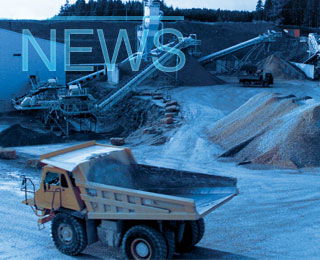The latest data from BPS-Statistics, Indonesia's official statistics office, shows a decline in the country's cement demand, which is likely to be a small seasonal correction. Regionally the results are mixed and for the year to date there remains a slight increase in cement consumption.
Cement sales in Indonesia amounted to 5.353Mt in June 2024. This is a decrease of 1.2 per cent YoY compared to the 5.418Mt reported a year earlier. Local dispatches in Bali-Nusa Tenggara during June rose 4.2 per cent YoY to 335,873t from 322,229t. Java, the country’s largest market accounting for 52 per cent of all sales, saw dispatches in June rise 2.5 per cent YoY to 2.906Mt from 2.835Mt. The strongest growth was reported in Kalimantan, where the development of the new capital, Nusantara, is ongoing. Sales there rose 18.8 per cent YoY in June to 472,759t, up from 400,258t.
The ongoing development of Indonesia's new capital will drive consumption in Kalimantan, particularly in the east of the region, for some time to come. By the end of 2029, 1.2m people are expected to have relocated to the new capital, suggesting residential and amenities construction will continue drive bulk sales growth. GDP data for the 1Q24 show government investment grew 3.8 per cent YoY, predominantly underpinned by building investment thanks to ongoing infrastructure projects. Overall GDP growth accelerated in the first quarter to 5.1 per cent YoY, and the economy is forecast to grow in the 4.7- 5.5 per cent range for 2024 as a whole, according to the central bank.
Other regions were not as strong, Sulawesi reported a 23.4 per cent YoY fall in June sales to 401,085t from 523,372t. Maluku-Papua saw a fall of 20.1 per cent YoY, coming in at 129,269t, down from 161,788t. Sumatera also reported a contraction in June of 5.7 per cent YoY to 1.108Mt, down from 1.175Mt.
Looking deeper into the June sales, bagged sales dominate dispatches in Bali-Nusa Tenggara, accounting for 91 per cent of total sales volumes, followed by Maluku-Papua at 82 per cent. Bulk sales are greatest in Java, accounting for 37 per cent of total sales, followed by Kalimantan at 36 per cent.
Cement production drops back
Cement manufacturers are already responding to the market in lowering their utilisation rates and overall output. Cement production in Indonesia contracted 10.6 per cent YoY to 4.919Mt, from 5.503Mt in June 2023. Clinker production decreased 15.4 per cent YoY to 4.236Mt, down from 5.009Mt in the previous year.
Indonesia's total cement capacity was 138.95Mta in 2023, according to The Global Cement Report – 15th Edition, giving a capacity utilisation rate of just 48.2 per cent. Further falls in production volumes are likely while export markets are expected to become more attractive in reducing oversupply issues.
Exports expected to pick up
Lower domestic cement sales have not immediately resulted in higher exports, which are also under increasing pressure. In June, cement exports fell a notable 67.5 per cent YoY to 53,700t, down from 165,185t a year earlier. However, clinker exports rose 4.9 per cent YoY to 793,791Mt from 756,919t a year earlier. Bangladesh remained the key export market in June, accounting for 66 per cent of total exports, followed by Australia (15 per cent) and Taiwan (11 per cent).
Limestone-poor Bangladesh will remain a key market for clinker and exporters may look to expand trade regionally and further afield. Clinker exports to Australia rose 110 per cent in 2023 and cement exports to Mauritius jumped 186 per cent YoY, while Yemen and Fiji were new markets for clinker and cement sales, respectively, last year.
1H24 cement demand growth confirmed
BPS-Statistics says the number of poor households declined in both urban and rural areas and fell to nine per cent of the population in March 2024, a decrease of 1.14m. Combined with cooling inflation, declining unemployment and robust consumer confidence, this suggests the recovery seen in the self-build sector in the 2H23 will continue. Further government support through the National Affordable Housing Program will also bolster demand.
This seems to be the case in the 1H24 as growth prevailed and domestic cement sales reached 28.542Mt. This is an increased of 1.4 per cent YoY compared to the 28.085Mt reported in the 1H23. Three regions reported increase sales and three reported contractions during the period. Kalimantan reported a 22.1 per cent YoY increase to 2.477Mt from 2.028Mt. Sales in Bali-Nustra rose 11.9 per cent YoY to 1.826Mt, from 1.632Mt previously, and sales in Java rose 1.9 per cent YoY to 14.830Mt, up from 14.552Mt. Contrastingly sales in Sulawesi fell 10.7 per cent YoY to 2.437Mt from 2.728Mt, local dispatches in Maluku-Paua declined 8.3 per cent YoY to 916,106t from 999,499t, and Sumatra recorded a 2.4 per cent YoY fall to 6.001Mt from 6.146Mt in the first half of 2023.
In the 1H24, bagged sales were down 2.6 per cent YoY but accounted for 70 per cent of total sales during the period, with the remainder bulk sales, which grew 12.4 per cent YoY.
Combined cement and clinker exports amounted to 5.9Mt in the 1H24, an 11.5 per cent YoY increase from the 1H23.
Outlook
Domestic cement sales grew modestly in the 1H24, after growing 3.4 per cent for 2023 as whole. Steady growth in domestic cement sales is forecast in 2024. Indonesia’s young population, expanding middle classes and ongoing urbanisation will help underpin demand.
Indonesian manufacturers and construction companies are increasingly optimistic driven by improved access to credit and supply of materials and the reduced price of materials. The non-metal mineral products industry sub-measure of the Prompt Manufacturing Index-Bank Indonesia (PMI-BI) jumped to 55.42 in the 2Q24 up from 50.36 in the first three months of the year. Nevertheless, overcapacity remains a problem in the cement sector which is characterised by low utilisation rates.
